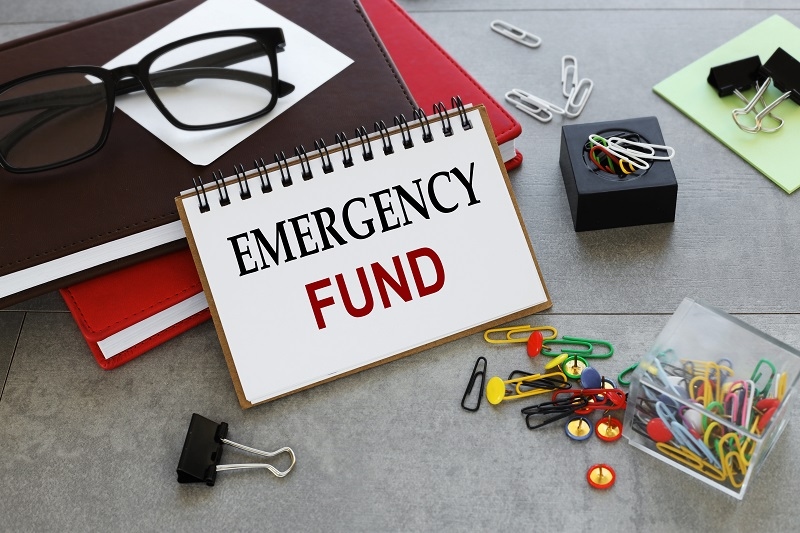
Life seldom goes according to plan. Even if you have the proper insurance coverage, unexpected costs can arise that take many people by surprise. That's where developing an emergency fund for insurance comes into play. Having cash savings with your insurance policy means you are financially ready for those out-of-pocket expenses, deductibles, or gaps in coverage that aren't covered by insurance alone.
If you've ever asked yourself, "How much should I have in an emergency fund?" or questioned the importance of insurance vs. emergency savings, this guide will explain all of the salient points. You will get more than tips; you will have tried and true emergency fund hacks and budgeting for surprise expenses, while keeping both your health and finances intact.
Insurance is needed, but it's not full protection. Most policies have deductibles, co-pays, and exclusions that place the responsibility of partial cost upon you. For example:
You can think of it as your money cushion, filling the time gap between the payout of your insurance and the amount you urgently need. Without it, you may be forced to borrow, dip into high-interest credit cards, or withdraw from retirement savings—all of which can financially set you back.
While both create a financial cushion, they have a different purpose.
For example, if your deductible for health insurance is $2,000 and you are hit by an unexpected medical crisis, your emergency fund pays for the initial expense before insurance coverage starts. Likewise, if your house insurance policy covers partial or no damages in certain situations, savings will aid in fixing immediately.
They make up a cushion which ensures stability financially. Having only one of them leaves scope for financial vulnerability.
One of the most frequent questions is: "How much should I save for emergencies?"
The general rule of thumb is to save three to six months' worth of living costs. These are the necessities such as:
But if you wish to synchronize your emergency fund with your insurance policy, then consider the following factors:
Check your health, auto, and home insurance to get estimates of what out-of-pocket costs will be. Your emergency fund should be at least what you have as deductibles and maximum out-of-pocket expenses.
Bigger families likely will have bigger expenses relating to medical care or just living expenses in general. That may mean you need to have a larger cushion.
If your job is not secure, target nearer to 9–12 months of savings for extra protection.
Living in regions prone to floods, wildfires, or earthquakes may require a larger emergency fund since not all disasters are covered by standard insurance.
By tailoring your savings target to these factors, you’ll create a fund that works in sync with your coverage rather than duplicating it.

Creating an emergency fund isn't a one-time action—it demands constant discipline and planning. Here are budgeting strategies for covering unexpected expenses without breaking your regular finances:
Automate transfers to your emergency savings account every payday. Make it a regular bill you can't avoid.
Rather than feeling bogged down by the needexpenses to save six months of expense, divide it into milestones. For instance:
Look at your subscriptions, eating out, and fancy purchases. Just cutting $100 a month is $1200 a year.
Freelancing, part-time employment, or selling items you no longer need can help you save faster.
When you change your lifestyle, expenses, or insurance coverage, review your emergency fund goals to stay aligned.
Having an emergency fund that uses insurance wisely involves smart behaviors. Use these emergency fund tips to help you:
By adopting these habits, your fund is a trusted companion to your insurance policy instead of a distant savings objective.
To see how this plays out in real life, let's consider a few examples:
Let's say you require an emergency operation. Your policy pays 80% of the cost, but you are responsible for paying $3,000 in co-pays and deductibles. Without an emergency fund, you'd have to scramble. With it, you pay it without a hitch.
Your vehicle is totaled, and though insurance covers replacement value, you have to come up with $1,000 for rental fees before the claim can be settled. An emergency fund covers the difference.
A windstorm destroys your roof, and the insurance only pays for partial repairs. Your emergency fund allows you to pay for that amount that will not be reimbursed without going into debt.
These examples illustrate why insurance is not enough. The two, together, will offer peace of mind.
Even the best savers make mistakes. Avoid:
If you take these misunderstandings out of your situation, your fund will do what it is designed to do: work with your insurance.
Creating an emergency fund for insurance purposes is not only about saving money—it's about building financial flexibility. Although insurance protects you against significant covered risks, an emergency fund will enable you to be able to put aside the deductible, missing exclusions, and cover life's unexpected expenses, with assurance.
If you're wavering on "how much should I save for emergencies?", the answer is pairing your insurance policy with a properly structured emergency fund. By planning for the unexpected, while following the suggested advice for emergency funds listed here, you will have an approach that will keep you secure financially through whatever life can throw at you.
Begin modestly, persistently remain so, and see your money safety net develop into an impressive instrument for tranquil reassurance.
This content was created by AI